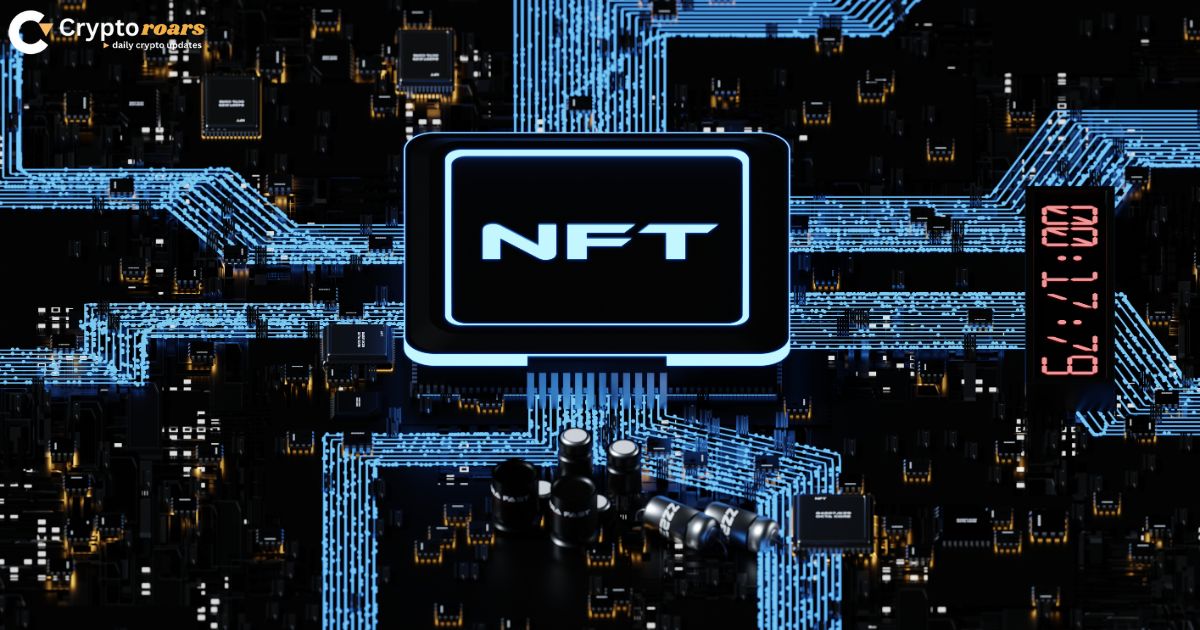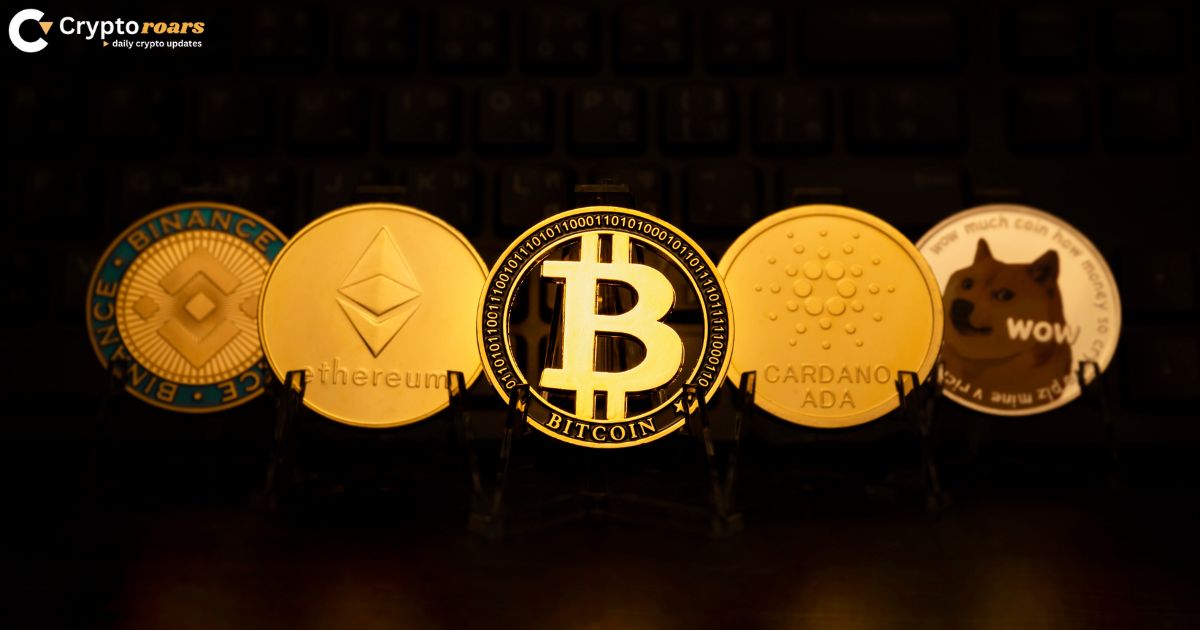Introduction to Digital Assets
The world of digital assets has changed the way people think about money, ownership, and technology. In recent years, many investors and tech enthusiasts have been trying to understand the Difference between NFTs and cryptocurrencies because both are often grouped under the same blockchain umbrella. While they share similar foundations like Distributed Ledger Technology (DLT) and smart contracts, their purposes, functions, and use cases are not the same. Cryptocurrencies act as a medium of exchange, while NFTs are designed to prove unique ownership of digital or physical items. This makes them very different in the financial and creative economy.
If you’re trying to explore the Difference between NFTs and cryptocurrencies, it’s important to look closely at how they operate in markets, their tokenization processes, and their value in modern society. Understanding this divide will give you clarity on how to invest, trade, or use these assets in the growing blockchain economy.
What Are Cryptocurrencies?
A cryptocurrency is the native currency of a blockchain. It is created by the blockchain protocol itself, and every unit is identical to another of the same type. Bitcoin, Ethereum, and Solana are leading examples. Each coin can serve as a medium of exchange or a store of value, giving people the ability to trade, invest, or hold them as digital money.
Cryptocurrencies are secured using cryptography, preventing double-spending and protecting their networks. They run on Distributed Ledger Technology (DLT), which ensures every transaction is visible and verifiable. The Ethereum ecosystem, for example, not only has Ether as its cryptocurrency but also supports thousands of other crypto tokens in Ethereum. This makes it one of the largest platforms for blockchain-based digital assets in the USA.
What Are NFTs (Non-Fungible Tokens)?

Unlike cryptocurrencies, non-fungible tokens (NFTs) are unique. They cannot be exchanged on a one-to-one basis because every NFT carries a different digital fingerprint. Think of it like owning an original piece of art; copies exist, but the original remains valuable because it is verified as authentic on the blockchain. This uniqueness is what defines NFTs as distinct digital assets.
NFTs are often created on existing blockchains using token standards such as ERC-721 tokens or ERC-1155. They may represent digital artworks, tangible and intangible assets on blockchain, collectibles, or even ownership in real estate. The difference between NFTs and cryptocurrencies becomes clear when you look at their nature: cryptocurrencies are interchangeable, but NFTs are not. In the USA, music labels, sports teams, and even schools are using NFTs to manage ownership, licensing, and distribution in innovative ways.
The Role of Blockchain in Both Assets
Both cryptocurrencies and NFTs exist because of the blockchain protocol. This protocol acts like a rulebook, ensuring assets are created and transferred securely. Transparency in blockchain is one of the most important features, making every transaction visible and reducing the chance of fraud.
Cryptocurrencies usually follow ERC-20 tokens or similar fungible standards, meaning every unit has the same value. In contrast, NFTs follow ERC-721 tokens where each piece is unique. Both depend on smart contracts, which are programmable agreements running automatically on the network. These contracts secure rules for ownership, trade, and token creation and tokenization process, giving people confidence in using them without relying on a central authority.
Key Similarities Between NFTs and Cryptocurrencies
The first similarity between NFTs and cryptocurrencies is their foundation. Both are blockchain-based digital assets that depend on cryptography for crypto asset security. They also use the same distributed systems to prevent counterfeiting prevention.
Another similarity is that both belong to an expanding universe of digital finance. Whether through utility tokens or governance tokens, both forms of assets link people to the expansion of crypto ecosystems. In practice, investors often hold cryptocurrencies and NFTs in the same digital wallets, trading them through similar platforms. Both share the appeal of decentralization and being part of permissionless and trustless systems, where anyone can join without special permission.
Major Differences Between NFTs and Cryptocurrencies
The most important difference between NFTs and cryptocurrencies is fungible vs non-fungible. A cryptocurrency like Bitcoin is interchangeable because every unit is the same. An NFT is one of a kind, meaning it cannot be directly swapped with another.
Another difference comes from divisibility. Cryptocurrencies can be split into smaller units, such as 0.0001 BTC, while NFTs must be owned as a whole. Value is another factor. Cryptocurrencies gain value through supply, demand, and adoption as a store of value. NFTs, however, gain worth through uniqueness, creator reputation, and the demand for specific platform-specific services. This clear divide shows why investors often treat them differently in their strategies.
Table: Key Differences
| Feature | Cryptocurrencies | NFTs |
|---|---|---|
| Nature | Fungible | Non-fungible |
| Standard | ERC-20 tokens | ERC-721 tokens |
| Value Basis | Market adoption, supply & demand | Rarity, uniqueness, creator value |
| Divisibility | Highly divisible | Indivisible |
| Role in Blockchain | Native asset | Tokens built on existing blockchains |
NFTs vs. Cryptocurrencies in the Market
In the USA, cryptocurrencies dominate with a market cap in the trillions of dollars. Bitcoin and Ethereum lead as household names, often seen as the native cryptocurrency of a blockchain. On the other hand, NFTs gained fame in 2021 when art collections sold for millions. Despite cooling down, their market continues to grow in gaming, entertainment, and ticketing.
Institutions see cryptocurrencies as safer investments compared to NFTs because of liquidity and long history. Yet NFTs provide opportunities in areas where digital ownership matters most. From an American investor’s perspective, the difference between NFTs and cryptocurrencies is not about choosing one but understanding how each fits in a portfolio.
Use Cases of Cryptocurrencies

Cryptocurrencies serve real-world purposes in the USA. They are used as a medium of exchange for goods and services, accepted by companies like PayPal and Tesla. They also act as a store of value, especially during economic uncertainty, much like gold.
Cryptocurrencies are central to Decentralized finance (DeFi), where users can lend, borrow, and earn interest without banks. They also work as governance tokens in some networks, giving users voting rights in blockchain governance decisions. This wide set of roles explains why cryptocurrencies are essential for both individuals and businesses.
Use Cases of NFTs
NFTs began with art, but their reach is now wider. In the USA, platforms like NBA Top Shot turned sports highlights into tradable assets. Musicians release tangible and intangible assets on blockchain, allowing fans to buy exclusive digital albums. Real estate firms experiment with NFT-based deeds to simplify property transfers.
Unlike cryptocurrencies, NFTs focus heavily on platform-specific services. They allow creators to earn royalties whenever their work is sold again. They also support programmable assets, meaning they can unlock content, grant access to communities, or work in online games. These examples prove NFTs are more than just collectibles; they represent an evolving future of ownership.
How to Buy and Trade Cryptocurrencies
In the USA, you can buy cryptocurrencies through licensed exchanges such as Coinbase, Binance.US, and Gemini. After purchase, they are stored in wallets. Hot wallets are online and easy to use, while cold wallets are offline and provide stronger crypto asset security.
Trading involves buying low and selling high, but many also use crypto for platform-specific services such as staking and earning rewards. Regulations in the US require exchanges to follow strict rules, giving investors more protection. Understanding these rules is important because the difference between NFTs and cryptocurrencies also extends to how they are bought and managed.
How to Buy and Sell NFTs
NFTs are purchased on marketplaces like OpenSea, Blur, and Rarible. Each NFT exists on a blockchain, and most are tokens built on existing blockchains such as Ethereum, Polygon, or Solana. Buyers usually pay in cryptocurrency, often in Ether.
Transactions often require gas fees, which cover smart contracts that secure the ownership transfer. Once bought, NFTs are stored in digital wallets alongside cryptocurrencies. Sellers can list their NFTs for resale, and creators can continue earning royalties through tokenization systems built into the blockchain.
Risks and Challenges of Cryptocurrencies
Cryptocurrencies face risks that investors in the USA must know. Volatility remains a major challenge. Prices can swing by double digits in hours, making them risky as a store of value. Scams and hacking also occur, targeting wallets and exchanges.
Regulation is another key concern. The SEC and other agencies continue to debate how to classify cryptocurrencies and whether they count as securities. These regulatory shifts create uncertainty, yet they also aim to protect investors and ensure safer expansion of crypto ecosystems.
Risks and Challenges of NFTs
NFTs face their own issues. Their markets have been criticized as speculative bubbles. Prices can rise quickly and crash just as fast. Copyright concerns are also common, as not every NFT seller has legal rights to the art or content they sell.
Frauds, rug pulls, and weaknesses in smart contracts add more risks. For US buyers, knowing the creator, verifying authenticity, and using trusted marketplaces are important steps. This highlights how the difference between NFTs and cryptocurrencies also lies in the type of challenges they face.
Future of Cryptocurrencies
The future of cryptocurrencies in the USA looks tied to regulation and mainstream adoption. More companies accept them for payments, while stablecoins like DAI play a role in reducing volatility. Institutional investors also join through Bitcoin ETFs and other regulated products.
Central Bank Digital Currencies (CBDCs) may reshape the role of cryptocurrencies. At the same time, DeFi continues to evolve, introducing new ways for people to interact with money. This ongoing expansion of crypto ecosystems shows how cryptocurrencies may stay a long-term part of global finance.
Future of NFTs
NFTs are evolving beyond art and collectibles. US companies explore NFTs for identity verification, event ticketing, and even medical record storage. Real estate transactions could soon rely on NFT-based contracts for faster transfers.
Integration with the metaverse and Web3 makes NFTs more exciting. Programmable assets will allow them to unlock experiences or connect with blockchain-based organizations. The future of digital assets is not just about money, but about ownership, identity, and how people interact online.
Final Comparison – Which One Is Right for You?
When we look at the Difference between NFTs and cryptocurrencies, the first thing to notice is that they serve very different purposes in the world of digital assets. Cryptocurrencies act as a medium of exchange and a store of value, making them closer to money in the digital economy. They are built on strong blockchain protocol systems that allow permissionless and trustless systems where people can trade without relying on banks. Assets like Bitcoin and Ethereum are considered the native cryptocurrency of a blockchain, and they solve major issues like double-spending while offering high security through transparency in blockchain. For anyone who wants liquidity, stability, and acceptance across global markets, cryptocurrencies are the practical choice.
NFTs, however, represent uniqueness and ownership. They are non-fungible tokens (NFTs) created through ERC-721 tokens that allow the tokenization of both tangible and intangible assets on blockchain. Unlike fungible cryptocurrencies, each NFT is one of a kind, making them useful in areas like digital art, collectibles, gaming, and platform-specific services inside the Ethereum ecosystem. They also play a role in blockchain-based organizations through voting rights in blockchain governance and new creative economies. If your goal is to prove ownership, fight counterfeiting prevention, or explore opportunities in culture, identity, and innovation, NFTs are the right choice. Both NFTs and cryptocurrencies will grow with the future of digital assets, but your decision depends on whether you want digital money or unique ownership.
FAQs on Difference Between NFTs and Cryptocurrencies
Q1: What is the main Difference between NFTs and cryptocurrencies?
The main Difference between NFTs and cryptocurrencies is that cryptocurrencies like Bitcoin or Ethereum are fungible and can be exchanged equally, while NFTs (non-fungible tokens) are unique and represent ownership of a specific digital asset such as art, music, or virtual real estate.
Q2: Can I use NFTs as a medium of exchange like cryptocurrencies?
No, NFTs are not designed as a medium of exchange or store of value. They act as proof of ownership of a unique asset, while cryptocurrencies are widely used as money in the digital world.
Q3: Are NFTs and cryptocurrencies built on the same blockchain?
Yes, both are blockchain-based digital assets. Cryptocurrencies often act as the native asset of a blockchain, while NFTs are usually created as ERC-721 tokens or other token standards on existing blockchains like the Ethereum ecosystem.
Q4: Which one is more secure—NFTs or cryptocurrencies?
Both rely on distributed ledger technology (DLT) for transparency in blockchain and counterfeiting prevention. However, security also depends on wallet safety, platforms used, and the user’s knowledge of scams.
Q5: Which has a better future, NFTs or cryptocurrencies?
Experts believe both will play a role in the future of digital assets. Cryptocurrencies may expand as global money, while NFTs could dominate areas like gaming, art, and tokenization of tangible and intangible assets.
For more information, keep visiting cryptoroars.com


